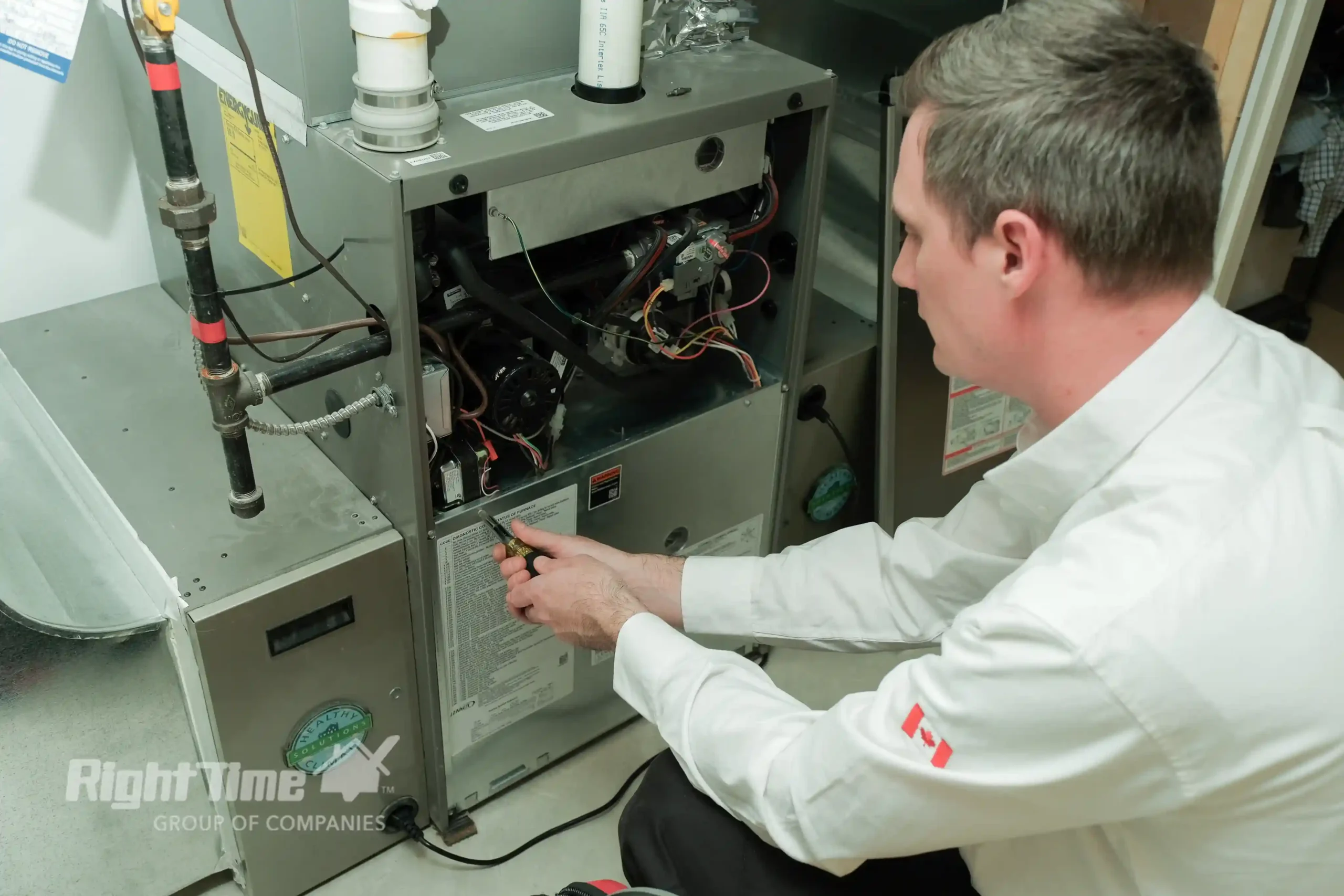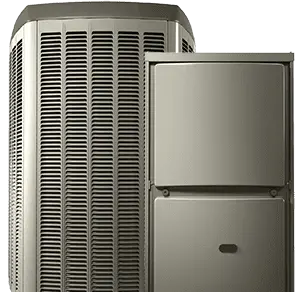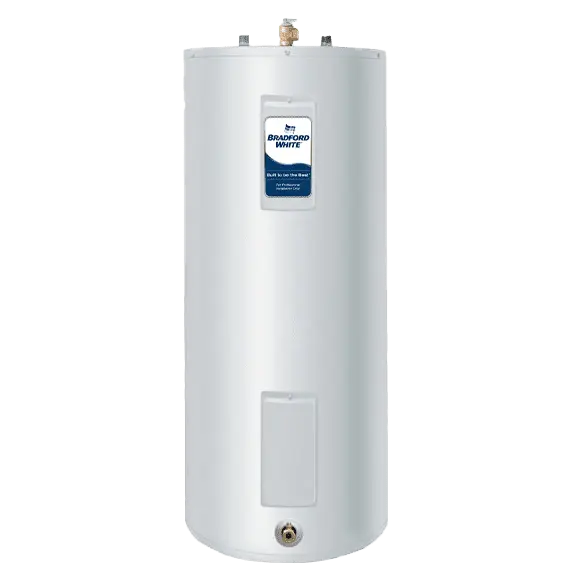Top 5 Furnace Warning Signs You Shouldn’t Ignore This Fall

Ontario’s shoulder season is the perfect time to listen for changes in how your furnace starts, runs, and shuts down. Catching a problem early can prevent a no-heat call when the first cold snap arrives, keeping your family safer. Below are five common red flags across Niagara–St. Catharines, what they often mean, and smart next steps.
Safety first: If you smell gas, your CO alarm sounds, or you see signs of flame instability (soot, yellow/orange flame), turn the system off, go outside, and call for service. Combustion, venting, gas piping, and sealed panels are TSSA-regulated work in Ontario and must be done by a TSSA-certified gas technician, employed by a TSSA-registered fuels contractor.
1) Short Cycling (and Frequent Resets)
What it looks like: The furnace starts, runs briefly, shuts off, and repeats. You may notice the thermostat never quite reaches the setpoint or safety limits, which triggers a trip.
Why it matters: Short cycling can indicate overheating due to restricted airflow (dirty filter, closed registers), pressure-switch or vent issues, or control faults. Overheating stresses the heat exchanger and other components.
Do this first (homeowner-safe):
- Replace/clean the filter. (NRCan: dirty filters increase energy use and strain equipment; replace or clean as directed.)
- Open supply/return registers; move furniture/drapes off vents.
- Confirm the furnace switch/breaker is on and the thermostat is set to Heat.
Call a pro if: Short cycling continues, you find tripped limits, or the unit locks out. A licensed tech can check static pressure, blower speed/temperature rise, venting, switches, and controls.
2) Burner/Ignition Problems (Hard Starts, Misfires, Unstable Flame)
What it looks like: Delayed ignition (“boom” or rumble at startup), repeated attempts to light, flame rolling out, or a flame that’s yellow/orange instead of steady blue.
Why it matters: Ignition and combustion issues can produce soot and carbon monoxide (CO).
Do this first (homeowner-safe):
- Make sure outdoor intake/exhaust pipes are clear of leaves, debris, snow, or nests. (Ontario utilities advise keeping appliance vents clear of snow/ice and debris.)
- Confirm thermostat batteries (if applicable).
Pro-only work: Burner cleaning/adjustment, flame sensor/igniter testing, gas pressure and manifold adjustments, vent/combustion diagnostics, and CO testing. In Ontario, this must be done by a TSSA-certified gas technician.
CO alarm reminder: In Ontario, install CO alarms outside each sleeping area when a fuel-burning appliance or garage is present; test monthly and follow the manufacturer’s instructions.
3) New Noises or Odours
What it looks like: Grinding, screeching, rattling, whistling, or metallic tapping; musty smells at startup or a persistent burning odour.
Why it matters:
- Grinding/screeching can indicate bearing wear in the blower or inducer motor.
- Rattling or booming can indicate delayed ignition or loose panels.
- Whistling can indicate restricted airflow or duct leaks.
- Musty odours at startup can result from off-season dust; a persistent burning smell needs a safety check.
Do this first (homeowner-safe):
- Change the filter; ensure registers/returns are open.
- Check that the furnace door is firmly latched (no gaps/whistling).
Call a pro if: Noises persist or intensify, or you notice vibration, hot/burnt smells, or visible soot.
4) Weak Airflow and Cold Rooms
What it looks like: Some rooms won’t warm up; air feels weak at the vents; the system runs longer than usual.
Why it matters: Low airflow wastes energy and can cause overheating/limit trips. Causes include clogged filters, obstructed ducts/registers, blower issues, undersized/dirty returns, or a mis-set blower speed.
Do this first (homeowner-safe):
- Replace the filter; open/clear all supply and return grilles.
- Make sure large furniture or rugs aren’t blocking returns.
- If you have a humidifier, ensure the bypass damper is in the correct seasonal position (if applicable).
Pro-only checks: Static pressure testing, duct leakage and balancing, motor/capacitor testing, and confirming temperature rise per the nameplate.
5) Rising Bills or Frequent Lockouts
What it looks like: Bills climb compared to last fall without a significant change in weather or usage, or you see frequent fault codes/lockouts and have to reset the unit.
Why it matters: Efficiency can slip due to dirty burners, incorrect gas pressure, poor airflow, failing sensors, or venting issues. Frequent lockouts indicate a control or safety fault that needs diagnosis.
Do this first (homeowner-safe):
- Replace the filter; verify the thermostat schedule isn’t over-cycling the furnace.
- Ensure exterior intake/exhaust openings are clear and do not ice over during freeze–thaw cycles along the lake.
- Compare your bill to the same month last year to rule out rate or usage changes.
Call a pro if: You see repeated codes, need frequent resets, or costs keep climbing. A tune-up and diagnostic can restore performance and catch issues before peak winter.
Quick Homeowner Checklist (Before You Call)
- Filter clean/replaced.
- Thermostat on Heat; fresh batteries (if applicable)
- Furnace switch/breaker ON
- Intake/exhaust pipes clear (leaves, frost, snow)
- All vents/returns open and unblocked
- Test CO alarm (replace if expired)
DIY vs Pro: Filters, registers, thermostat settings, and clearing intake/exhaust are homeowner-safe. Do not open sealed panels, adjust gas pressure, or change wiring. Under Ontario’s Gaseous Fuels Regulation, combustion/venting work and fuel-gas diagnostics must be performed by a TSSA-certified gas technician.
Why This Matters in Niagara–St. Catharines
Lake-effect moisture, wind, and freeze–thaw cycles can stress ignition and venting and clog exterior terminations with leaves or frost. Ontario utilities and TSSA specifically warn homeowners to keep appliance vents and meter areas free of snow, ice, and debris. A fall tune-up confirms safe combustion, verifies airflow and temperature rise, checks ignition/controls, and ensures you’re ready for the first real cold spell.
Book Reliable Heat This Fall
Need a fast fix or just a confidence check? Book a furnace repair or tune-up with Mr. Furnace. Prefer predictable upkeep and priority service during peak season? Explore our Maintenance Plans for annual maintenance and front-of-the-line scheduling.

